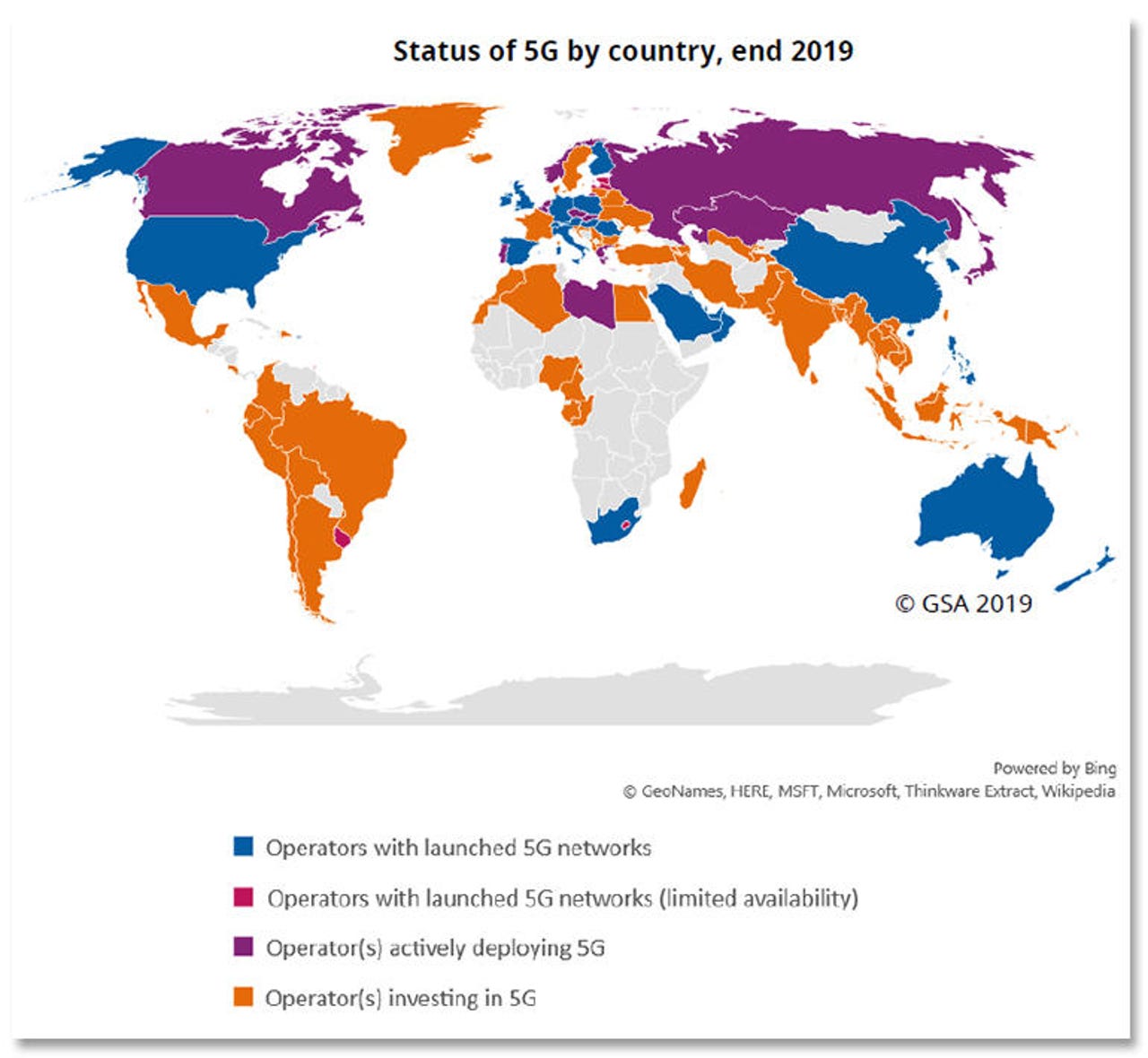Top programming languages, 5G worries, cloud computing, and more: Research round-up


5G: The pace of deployment and is starting to pick up
Let's start with our special feature on 5G. Although 5G networks are still a work in progress for mobile operators, the pace of deployment and launches is picking up. By the end of 2019, according to the GSA (Global mobile Suppliers Association), 61 operators in 34 countries had launched one or more 3GPP-compliant 5G services
For more see: How 5G and IoT will affect the auto industry
5G won't impact many IoT projects anytime soon
TechRepublic Premium research highlighted how, despite promises of higher bandwidth, low latency, and ultra-reliability, more than half (56%) of business leaders believe 5G availability is not accelerating IoT projects in their organisations. At 61%, remotely monitoring assets in the field is the most popular IoT project that companies plan to undertake as a result of 5G availability. Almost half (49%) of companies plan to use 5G to control machines remotely.
For more see: Survey: 5G won't impact many IoT projects anytime soon
5G enterprise deployments: Optimism abounds as do security concerns
In other research, Accenture surveyed more than 2,600 business and technology decision-makers and found that 79% believe 5G will have a significant impact on their organisations. More than half (57%) think 5G will be revolutionary. The catch is that 35% of respondents have security concerns about 5G, up from 32% a year ago. Meanwhile, 62% of respondents believe 5G will make them more vulnerable to cyberattacks.
For more see: 5G enterprise deployments: Optimism abounds as do security concerns
Programming languages: Go, Scala and Ruby most wanted
If you have the skills, Go, Scala and Ruby are the programming languages most likely to get you job interviews, although JavaScript, Python and Java are the languages most used by developers. According to data from recruitment firm Hired, Go was the most in-demand language last year, with coders being offered 9.2 interviews on average over a two-to-six-week period, which was slightly up on 2018. Scala was second most in-demand by this measure (8.5 interviews) followed by Ruby (8.2) and TypeScript (7.9).
For more see: Programming languages: Go, Scala and Ruby most wanted, Python and JavaScript most used
Developer: For pay and job openings, these are the best roles
Employment search site Indeed's 'best jobs of 2020' list is totally dominated by tech roles, which rule in number of postings and generally offer higher average base salaries. Seven of the top 10 jobs in the list of best jobs in 2020 in the US are in tech. At the top of the pile are software architect roles, which have an average base salary of $119,715 with job postings growing by 18% over the past three years.
For more see: Developer: For pay and job openings, these are the best roles
Python is the top search term and top programming language
O'Reilly Media reports that Python is the top search term on the company's learning platform for the full 2019 calendar year, and it's the #1 programming language, based on content usage, for the same period. In its report, O'Reilly describes Python as "preeminent". Other growing categories include data engineering, data science, and AI + ML, generally, and Kafka, specifically.
For more see: Python "preeminent" in O'Reilly learning platform usage analysis
Ethical hacking is becoming a lucrative pastime
Hacking is growing, but in some cases, that's no bad thing. That's the main take-away from the annual report on the state of ethical hacking published by bug bounty platform HackerOne. As of 2020, the organisation can boast a base of 600,000 white hat hackers; a community that cashed in a record $40 million in bounties in the past 12 months. HackerOne said that the money earned in bounties this year was almost equal to the entire amount awarded in all prior years combined.
For more see: Seven hackers have now made a million dollars each from bug bounties, says HackerOne
Data-breached companies can lose customers forever
Security.org surveyed 1,000 people in the US and discovered that almost one in four Americans stop doing business with companies who have been hacked, and more than two in three people trust a company less after a data breach. Breaches normally expose email addresses (49.5%) or full names (47.8%), but 13.8% of breaches expose credit card information and 11.8% of breaches expose debit card information.
For more see: One in four Americans won't do business with data-breached companies
CIO strategy: Become a transformational chief information officer
In recent years, the CIO role has evolved from a legacy position focused on infrastructure to a business role where growth and innovation are table stakes. ZDNet's Michael Krigsman suggests this shift represents an evolution from the traditional to transformational CIO - and he presents the characteristics associated to this management shift.
For more see: CIO strategy: Become a transformational chief information officer
Tablet sales are still in decline, but Apple's iPad shows the way forward
Researcher IDC's latest figures show that unsurprisingly, after several years of decline, tablet manufacturers are not out of the woods yet. The tablet market shrank a further 1.5% in 2019 compared to the previous year, to 144 million units shipped globally, with the majority of vendors suffering from a decline in sales. Beating all the odds, Apple scored 22.7% year-on-year growth in the holiday quarter of 2019.
For more see: Tablet sales are still in decline, but Apple's latest iPad is showing the way forward
Cloud computing: Spending is breaking records
Organisations across the globe splashed out a record $107 billion for cloud computing infrastructure services in 2019, up 37% from the previous year, according to a new report released by analyst firm Canalys – and rather unsurprisingly, a whole third of the cash prize was pocketed by cloud behemoth Amazon Web Services (AWS). The report estimates that total spending on cloud infrastructure services in 2024 will reach $284 billion.
For more see: Cloud computing: Spending is breaking records, Microsoft Azure slowly closes the gap on AWS
Maybe data centers aren't actually so bad for the planet
Finally, research published in Science shows that while the amount of computing done in data centres increased by 550% between 2010 and 2018, the amount of energy consumed by the centres in the same period only grew by 6%. In other words, data centres are getting more power-efficient: smart management means that electricity consumption can be better scaled, storage devices are becoming more efficient, and so are networks and infrastructure.
For more see: Maybe data centers aren't actually so bad for the planet